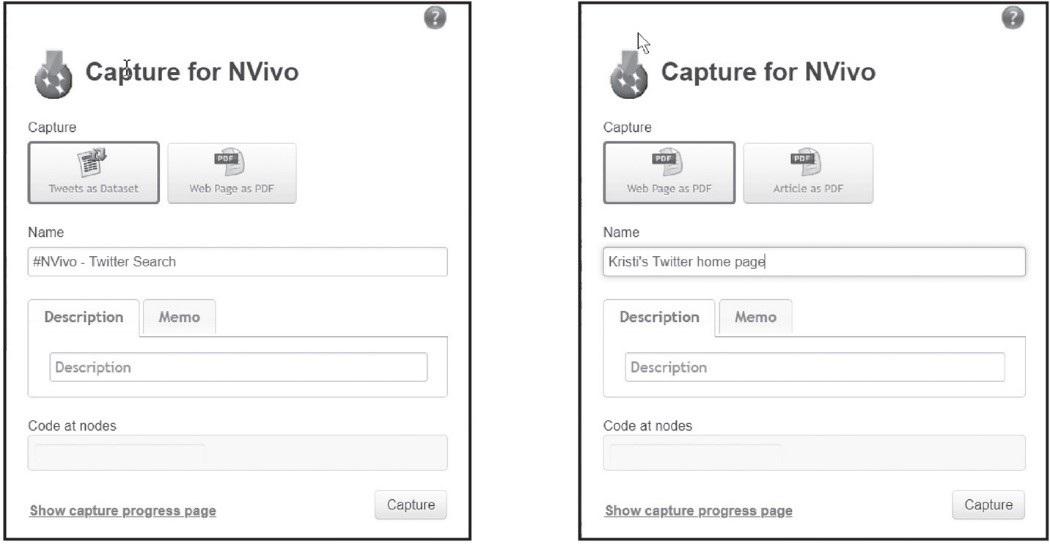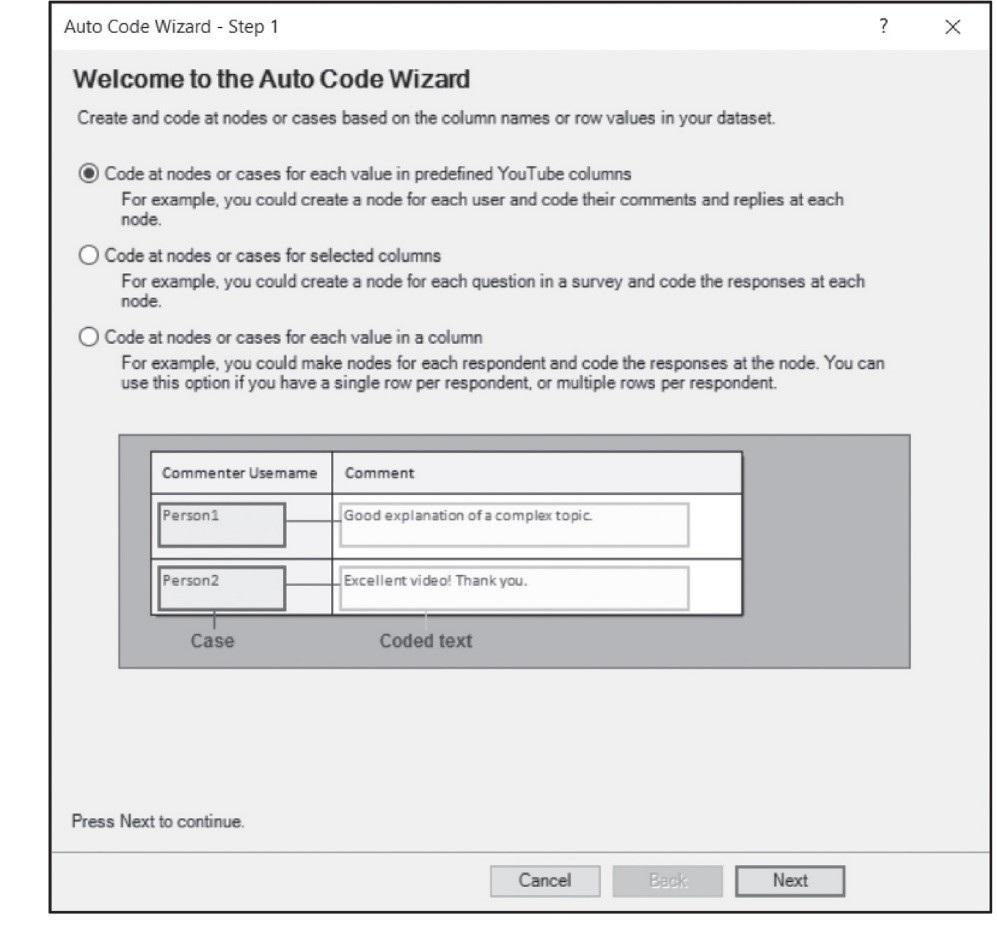- Open the web page you want to capture.
- Select the NCapture button (Figure 10.1).
- The NCapture window opens, indicating that the web page will be imported as a pdf (Figure 10.7).

Figure 10.7 Collecting a web page with NCapture via Internet Explorer
- Select ‘Article as PDF’ if you are viewing an online article and wish to exclude unnecessary content such as advertisements and links to other articles.
- Add a Description for the item and a Memo if you wish. Both will be imported with the web page and both can be added or modified later.
- Code at nodes: Add Nodes for coding if you wish, although the entire page will be coded at these Nodes.
- You might wait to code the page because you will be able to code all or part of it later, after import.
- In Chrome: Capture. The default download location is Downloads.
- In Internet Explorer: Save in either the default location or Browse > Select a location > Capture.
The entire web page will have been captured, beyond what was immediately visible on the screen. (i.e., the capture is not limited to what will fit on a single page). These will be saved as .nvcx files, which NVivo will later use to reconstruct the Files as pdfs in your Project.
Import and view a web page
- Ribbon: Data > NCapture.
- If you do not see the name of the page you captured > Click on the arrow to identify the correct folder.
- Select the captures to import by clicking on All captures not previously imported and ticking the desired captures > Import (Figure 10.8).

Figure 10.8 Selecting an NCapture file for importing as a web page
- Navigation View: Data > Files.
- List View: Double-click on the imported File (Figure 10.9).

Figure 10.9 A web page converted into a pdf and opened in NVivo






